

For employees age 40 or older, the federal workforce faces a persistent challenge addressing pay disparities among racial and gender demographics.
The federal government does a better job keeping workers age 40 or older employed, compared to the rest of the country’s labor force, and gives its workforce higher pay as they age.
But within that same group, the federal workforce still faces a persistent challenge addressing pay disparities between racial and gender demographics.
The Equal Employment Opportunity Commission, in a report issued Monday, finds the federal government scored higher than the rest of the labor market in the U.S. in terms of the pay and diversity of its 40-and-up workforce.
The report finds that employees 40 or older made up 72% of the federal workforce in 2017, the most recent year that the Office of Personnel Management had data available, compared to 54% of the rest of the civilian labor force in the United States.
Dexter Brooks, the associate director of the EEOC’s Office of Federal Operations, said the data reflects the “established fact of life that more older Americans are working longer, and in larger numbers than ever before.”
“The fact that more mature workers are contributing their experience and talents to their employers is good for the country,” Brooks said. “It also means the EEOC must continue to be vigilant in protecting their rights, and it behooves us to track and analyze of the situation of older employees in every sector to see what lessons may be learned.”
EEOC’s report marks just the latest data snapshot in support of the Biden administration’s focus on improving diversity, equity, inclusion and accessibility within the federal workforce,
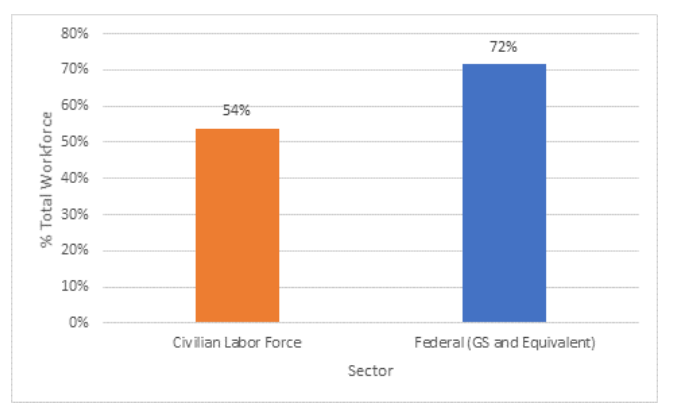
The federal government is the largest employer in the U.S., with more than 3 million employees. More than 70% of the permanent General Schedule workforce is age 40 or older and the average age of a federal civilian employee is 47.5 years old.
EEOC, in the report, determined agencies have “done an impressive job” delivering equal employment opportunities to older workers, compared to private-sector employers and the rest of the civilian labor force.
The report finds federal employees over 40 “enjoy greater representation and more diversity than their non-federal sector counterparts.”
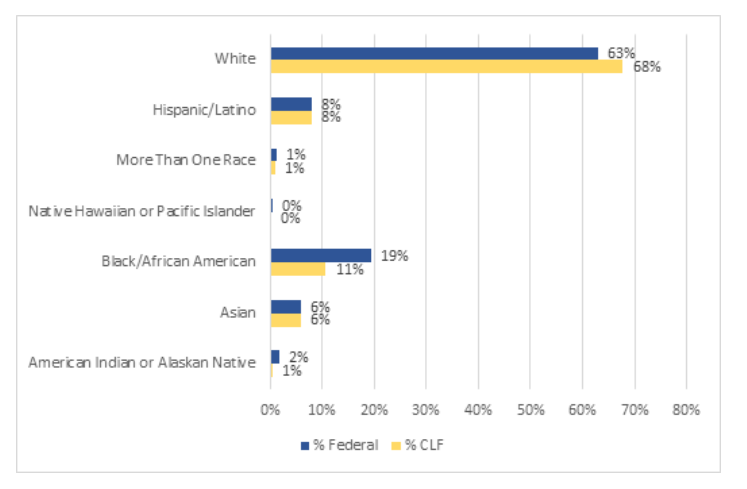
EEOC’s report shows that federal employees 40 or older generally earned more as they age, and that their earnings peak at age 65. At that point, the average federal employee earns $91,940 annually.
The agency said this finding indicates the federal sector is successful in discouraging pay penalties with age.
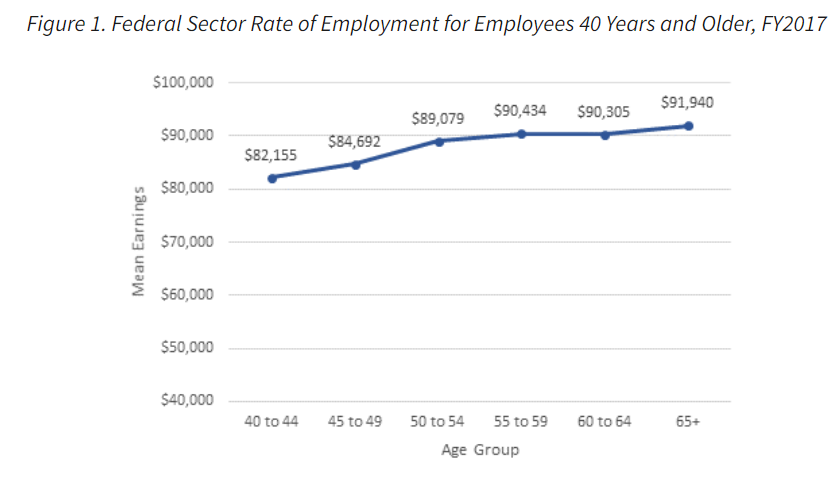
Despite these promising trends, the EEOC report also found the federal government has yet to narrow several pay gaps that persist across its workforce.
The report found men 40 or older, on average, earned $7,414 more than women 40 or older in the federal workforce, a more than 8% difference.
The report finds men age 40 or older in the federal workforce earned $91,250 a year on average, while women age 40 or older in the federal workforce earned $83,836 annually on average.
“Despite the relative success of the federal sector with regard to EEO delivery to employees 40 and over, the pay difference between men and women should not be ignored,” EEOC wrote.
That pay disparity is greater than the gender pay gap the Government Accountability Office found across the total federal workforce.
On average, male federal employees made 7% more than their female colleagues in 2017.
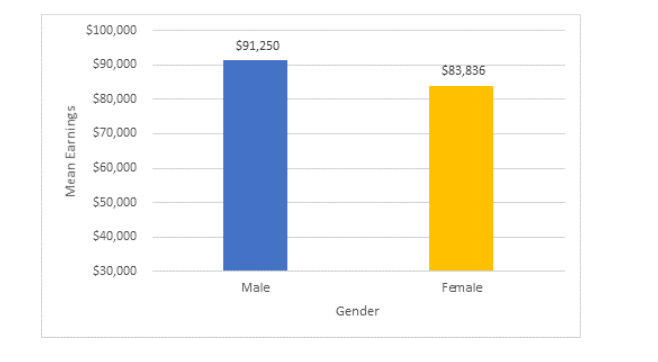
The report also found that white and Asian federal employees tended to earn more than other groups in the federal sector, and persisted among federal employees over 40 with college degrees.
However, EEOC said the “persistence of inequality despite the high level of oversight suggests that the EEOC should continue to develop policies and guidance that promote EEO.”
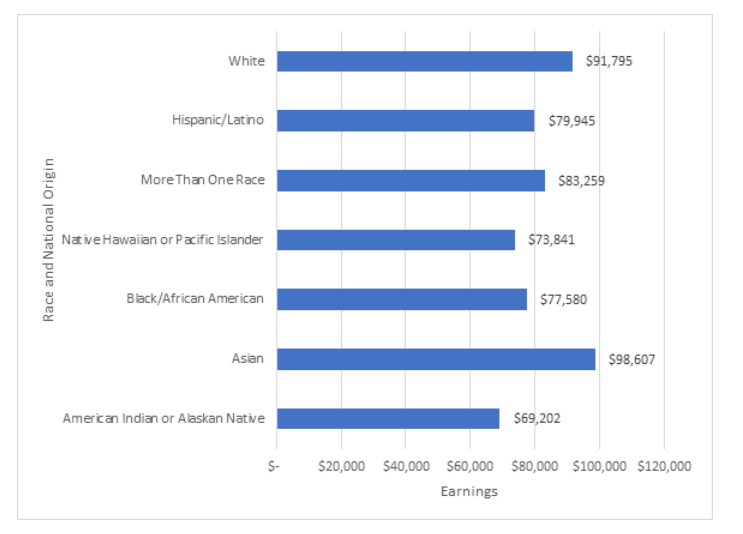
Despite having an older workforce than the country as a whole, age discrimination allegations made up nearly a third of all workplace complaints agencies received between 2013 and 2017.
Age discrimination ranked as the second-leading basis for workplace complaints, surpassed only by complaints of retaliation. Agencies received 4,980 complaints of alleged age discrimination, and the complaints focused on harassment, disciplinary action, and promotion selection.
While the federal sector saw 8%-9% more age-related workplace complaints than the private sector, the private sector saw more than twice the rate of findings in legal challenges.
The private sector had a finding rate for age complaints between 2.5% and 3% between 2013 and 2017. Federal sector findings have remained under 1% during this same period.
“While age complaints are indeed higher in the federal sector, data demonstrating that federal sector settlements are also higher while findings are lower suggest that the federal sector is more effective at resolving age discrimination complaints,” EEOC wrote.
EEOC finds that general job satisfaction, confidence in agency leadership, and a positive opinion of agency workplace inclusion, as indicated by the Federal Employee Viewpoint Survey (FEVS), resulted in fewer age complaints at a given agency.
The agency also determined that agencies whose EEO directors reported directly to leadership were 73% less likely to deal with age-related workplace complaints than other agencies.
Men age 40 or older make up 57% of the federal workforce, compared to 45% in the civilian labor force. Women age 40 or older make up 43% of the federal sector workforce, compared to 41% outside of government.
EEOC released the report in support of the executive order on diversity, equity, inclusion and accessibility in the federal workforce that President Joe Biden signed last summer.
The executive order includes “individuals who belong to communities that may face employment barriers based on older age” as a potentially underserved group needing attention.
EEOC’s report on feds over 40 marks the latest in a series of data snapshots on the state of the federal workforce.
EEOC and the Office of Personnel Management last month found the cybersecurity workforce ranked as one of the least diverse segments of the federal government.
Agencies, meanwhile, are expected to publish their DEIA strategies by March 23.
The strategies, required under Biden’s executive order, are meant to help agencies understand challenges experienced by federal employees and those looking to join the federal workforce.
Copyright © 2025 Federal News Network. All rights reserved. This website is not intended for users located within the European Economic Area.
Jory Heckman is a reporter at Federal News Network covering U.S. Postal Service, IRS, big data and technology issues.
Follow @jheckmanWFED

